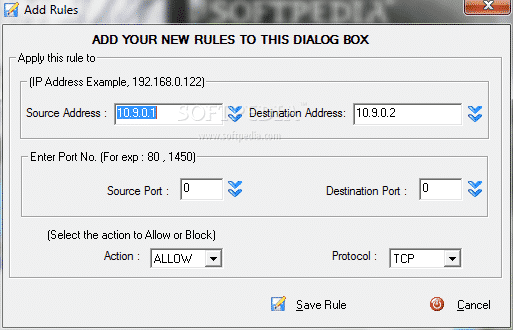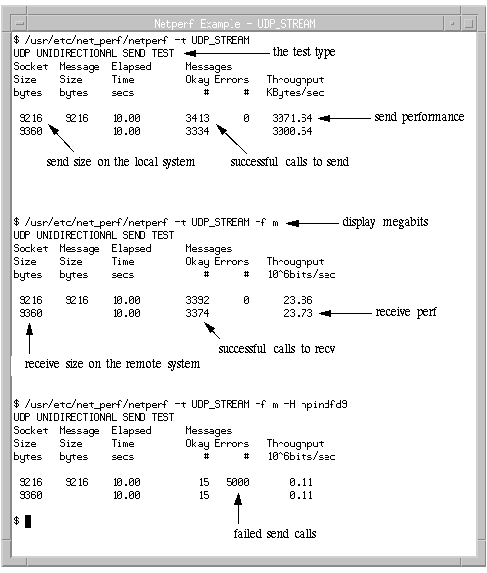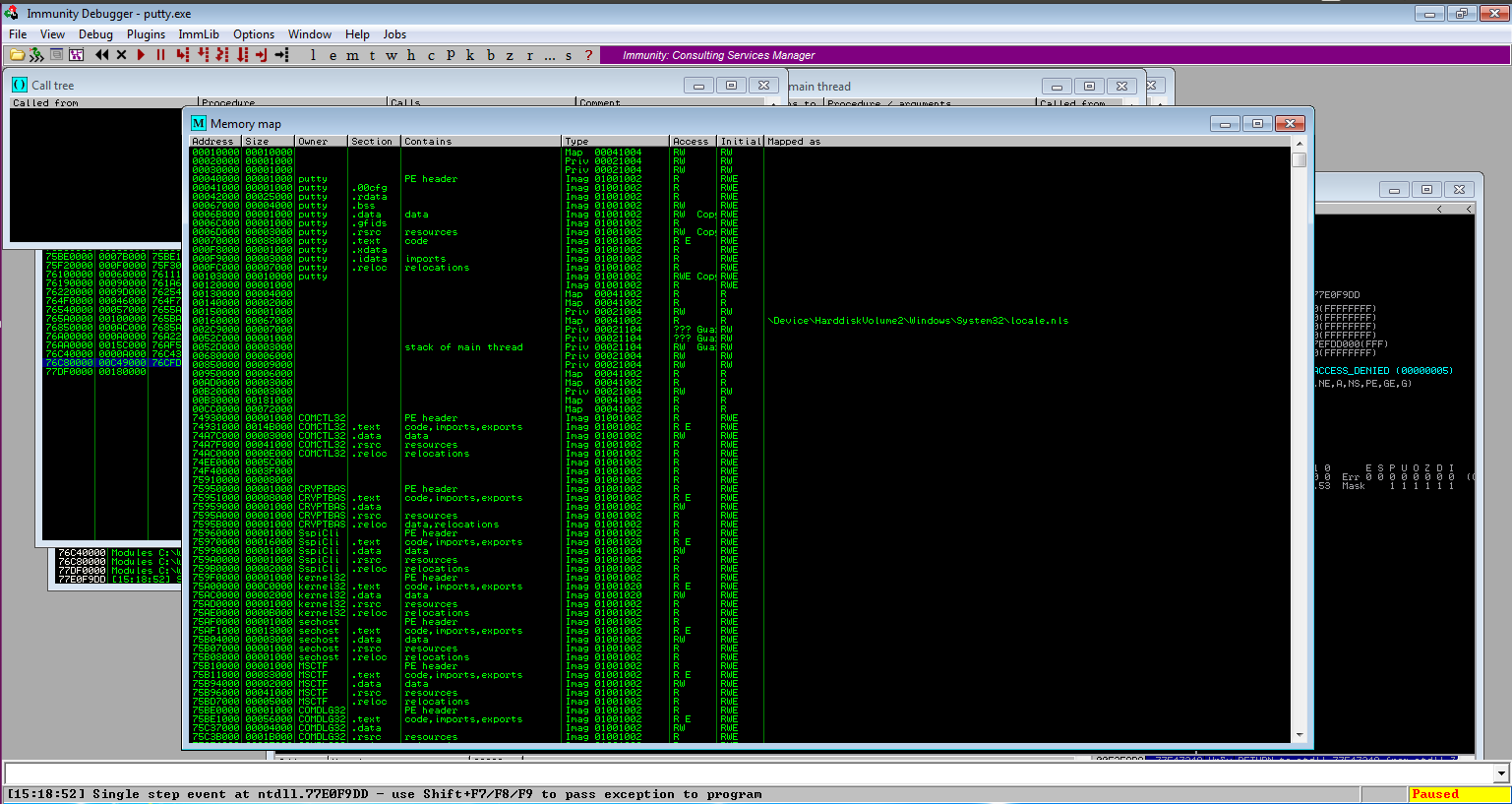- Run 'make install' to install the Netperf program binaries in /usr/local/bin. Note you must be logged in as root to write to the /usr/local/bin directory Preparing to use Netperf Netperf can be run as a standalone daemon or installed as a service daemon in the /etc/xinetd.d directory. Two files are created when the Netperf source is compiled.
- The installation is very straightforward if compiled with no parameters:./configure. In that case the installation is successfull. However, I'm installing netperf to run with flent for bandwidth benchmarking, so netperf needs to be compiled with the -enable-demo option. So, when I type./configure -enable-demo, all seems to be ok.
- Run 'make install' to install the Netperf program binaries in /usr/local/bin. Note you must be logged in as root to write to the /usr/local/bin directory Preparing to use Netperf Netperf can be run as a standalone daemon or installed as a service daemon in the /etc/xinetd.d directory. Two files are created when the Netperf source is compiled.
Netperf Training View the Netperf manual or whitepapers on using Netperf. Netperf is a software application that provides network bandwidth testing between two hosts on a network. It supports Unix domain sockets, TCP, SCTP, DLPI and UDP via BSD Sockets. Netperf provides a number of predefined tests e.g.
Iperf is a free open-source software tool that provides a capability to measure the throughput between two hosts using both Transmission Control Protocol (TCP) and User Datagram Protocol (UDP) data streams. The software can be run in either server or client mode. To determine the network bandwidth available between two systems, you can run iperf in server mode on one of the systems and in client mode on the other.The software is available for a variety of operating systems. You can download iPerf binaries from iPerf - The network bandwidth measurement tool for the following operating systems:
- Microsoft Windows
- Android
- iPhone / iPad
- Apple OS X
- Download iPerf for Ubuntu / Debian / Mint
- Download iPerf for Fedora / Red Hat / CentOS
- Download iPerf for openSUSE
- Download iPerf for Arch Linux
- Download iPerf for FreeBSD
You can also download the C++ source code from that page. Alternatively, if you are using a Linux distribution, you may be able to install it using a standard package management tool for the particular distribution of Linux that you are using. E.g., see Installing iperf on CentOS for instructions on how to install the software with yum.
If you install the software on two systems you control, you can test between those systems. There are also public iPerf3 servers in various parts of the world with which you can test. Those systems are running in server mode, so you use client mode on your local system when testing with them. You specify client mode with the -c option. You can see the available options for the program by issuing the command iperf -h from a command prompt while in the directory where you installed the software on the Microsoft Windows system.
For a Microsoft Windows system, you need only download the zip file for Windows, unzip the contents of the file, and then move the two files within the zip file, which are cygwin1.dll and iperf3.exe, if you downloaded a version 3 release of the software, to whatever directory you wish to keep the program in. Note: you can't test between a host running version 3 and one running version 2; both systems need to be running a version with the same major version unumber, e.g., a 2.x or 3.x version.


The download site offers 32-bit and 64-bit versions of the software. If you have a 32-bit version of Windows, you should use a 32-bit version and if you have a 64-bit version of Windows you should use the 64-bit version. If you don't know whether your version of Microsoft Windows is 32-bit or 64-bit, see Determining if your version of Windows is a 32-bit or 64-bit version.
To test with a public iperf3 server, bouygues.testdebit.info, located in France, I could issue the command iperf3 -c bouygues.testdebit.info using the iperf3 software installed on a Microsoft Windows system. Note: if you see the error message below, you may need to open a command prompt window in administrator mode to be able to test with iperf on the Windows system.
To open a command prompt window where you can run the command with administrator permissions, see the instructions at Obtaining a Command Prompt on a Windows 8 System; the steps for other versions of Windows are similar.

If you run the software in client mode, you will see output similar to the following, which is from a test with the public test server bouygues.testdebit.info.

For this particular test, the client system could achieve a bandwidth of about 7 - 8 Mbs, which was fairly good considering the client system was constrained by a 10 Mbs local area network (LAN) connection.
Install Netperf Windows
Justdeals Daily Electronics Deals
Netperf For Arm
Abstract
Netperf is a network performance benchmarking tool that can be used to measure the data throughput rate of both TCP and UDP communications across the network. This article will describe the steps necessary to
properly install and setup Netperf on Linux.
Introduction
Network performance monitoring is critical for today's high performance computing clusters. Many HPC
Linux clusters require the data transfer rate of installed network adapters to transmit data at the speed at which
they were designed to perform (i.e., 100Mb/s, 1000Mb/s, etc). Unfortunately, in the absence of a network
benchmarking tool, the node-to-node network performance of these adapters cannot be properly determined.
The downfall to this is that manufacturer specific tunable parameters for network adapters and operating
system's performance metrics will unequivocally go unused resulting in continued poor network performance.
In addition, the operating system's network protocols metrics might be configured to use minimum/default
values causing the system to bottleneck.
Obtaining and Installing Netperf
Netperf can be obtained from http://www.netperf.org/netperf/. The latest version, currently at 2.4.3, is recommended for networks configured to use IPv4 and IPv6. Once you have obtained the Netperf source code, extract it in a temporary directory then build the binaries. The following steps can be used to accomplish this task:
1. Download Netperf to a staging area on your Linux system
2. Unzip and untar the Netperf compressed source file
#tar -xzvf netperf-x.x.x.tar.gz, where x.x.x is the current version number.
3. Change to the directory where the Netperf source files were extracted (i.e., cd netperf-x.x.x, where x.x.x
is the version number)
4. Run ./configure
5. Run make
6. Run 'make install' to install the Netperf program binaries in /usr/local/bin. Note you must be logged in as root to write to the /usr/local/bin directory
Preparing to use Netperf
Netperf can be run as a standalone daemon or installed as a service daemon in the /etc/xinetd.d
directory. Two files are created when the Netperf source is compiled. The first is the Netperf server
'netserver', which must be run as a daemon in order to measure data throughput. The second 'netperf'
which is the client-side program that is used to communicate with the Netperf server program. The Netperf
client program sends the streams of data to the Netperf server unidirectionally and reports the rate of transfer
back to the user.
To run the Netperf as a standalone daemon, simply invoke the 'netserver' program then run 'netperf' to
observe the rate of transfer. For example, to see the data throughput on the node running both the server and
client program, do the following:
1. Invoke the Netperf server program
$ netserver
Starting netserver at port 12865
Starting netserver at hostname 0.0.0.0 port 12865 and family
AF_UNSPEC
2. Run the Netperf client program and observe the output
$ netperf
TCP STREAM TEST from 0.0.0.0 (0.0.0.0) port 0 AF_INET to
localhost (127.0.0.1) port 0 AF_INET
Recv Send Send
Socket Socket Message Elapsed
Size Size Size Time Throughput
bytes bytes bytes secs. 10^6bits/sec
87380 87380 87380 10.01 634.75
Notice that the maximum data throughput is approximately 63 MB/s when the client program is run on the
same node as the server. For a more detailed description on interpreting the output, refer to the Netperf manual at http://www.netperf.org/svn/netperf2/tags/netperf-2.4.3/doc/netperf.html.
In order to run Netperf as a server daemon you must be logged in as root to edit the /etc/services file
and to add a service file in the /etc/xinetd.d/ directory. Assuming your are logged in as root, edit the
/etc/services file and add the entry such as the following to the end of the file.
# Add to end of /etc/services
netperf 12865/tcp # Network performance monitoring
netperf 12865/udp # Network performance monitoring
Next change to the /etc/xinetd.d directory and create a service daemon file call netperf with the
following content:
# Netperf server program service daemon
service netperf
{
disable = no
socket_type = stream
protocol = tcp
wait = no
user = root
server = /usr/local/bin/netserver
}
Restart the xinetd daemon for the Netperf server program to be added as a service daemon.
To test for communication between the Netperf service daemon and a remote client do the following:
1. Ensure that the Netperf client program code is available on the node from which it is to be invoked
2. Run the Netperf client program on the node with the -H option
$ netperf -H <server>, where server is the name of the machine running the Netperf server
service daemon. For example:
$ netperf -H tracker
TCP STREAM TEST from 0.0.0.0 (0.0.0.0) port 0 AF_INET to
tracker.mydomain.com (172.168.0.1) port 0 AF_INET
Recv Send Send
Socket Socket Message Elapsed
Size Size Size Time Throughput
bytes bytes bytes secs. 10^6bits/sec
87380 87380 87380 10.02 92.04
Again, notice that maximum data transfer rate is approximately 9.2 MB/s. Also, the default receive socket size as set on the Netperf server is 87380 bytes while the send socket and send message size are equivalent. For a more detailed description of the flags that can be used with Netperf plus other examples, please refer to the Netperf manual located at http://www.netperf.org/svn/netperf2/tags/netperf-2.4.3/doc/netperf.html.
Summary
This article has demonstrated how Netperf can be used as a network benchmark tool for evaluating the
performance of your HPC network. Not only will you find the tool useful, but it can help you to decide what
settings should be passed to the Linux operating system TCP send and receive socket buffers to help increase data throughput for node-to-node communications.